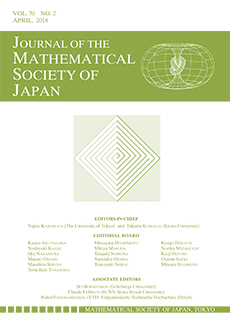Abstract
The main purpose of this work is to generalize the $S^{3}_{\boldsymbol{w}}$ Sasaki join construction $M \star_{\boldsymbol{l}} S^{3}_{\boldsymbol{w}}$ described in the authors' 2016 paper when the Sasakian structure on $M$ is regular, to the general case where the Sasakian structure is only quasi-regular. This gives one of the main results, Theorem 3.2, which describes an inductive procedure for constructing Sasakian metrics of constant scalar curvature. In the Gorenstein case ($c_{1}(\mathscr{D}) = 0$) we construct a polynomial whose coeffients are linear in the components of $\boldsymbol{w}$ and whose unique root in the interval $(1, \infty)$ completely determines the Sasaki–Einstein metric. In the more general case we apply our results to prove that there exists infinitely many smooth 7-manifolds each of which admit infinitely many inequivalent contact structures of Sasaki type admitting constant scalar curvature Sasaki metrics (see Corollary 6.15). We also discuss the relationship with a recent paper of Apostolov and Calderbank as well as the relation with K-stability.
Funding Statement
The authors were partially supported by grants from the Simons Foundation, CPB by (#519432), and CWT-F by (#422410).
Citation
Charles P. BOYER. Christina W. TØNNESEN-FRIEDMAN. "The $S^3_{\boldsymbol{w}}$ Sasaki join construction." J. Math. Soc. Japan 74 (4) 1335 - 1371, October, 2022. https://doi.org/10.2969/jmsj/83828382
Information





